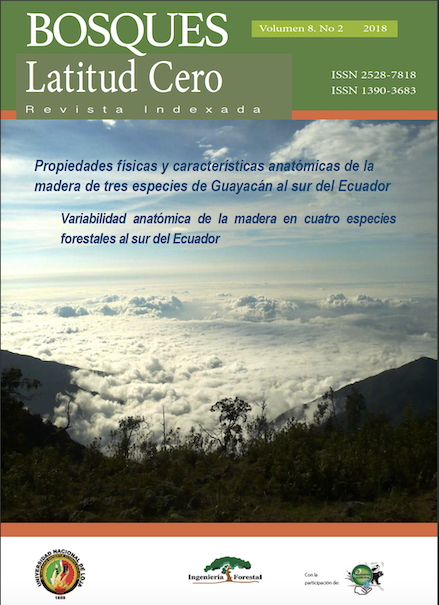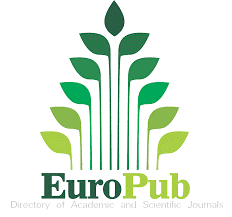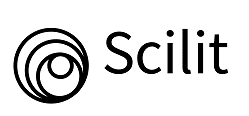Evaluation of the quality of soils of fruit systems in the Central Zone of Chile
Abstract
The central zone of Chile has the highest percentage of fruit trees per planted area. These agri-cultural systems have caused a change in their natural fertility, productivity and properties; concomitantly, loss of quality. To find and identify suitable management practices for fruit crops, the evaluation method related to soil quality has the greatest influence. The main objective of this study was to generate soil quality indexes (ICS) for fruit systems in the Central Zone of Chile, based on physical, chemical and biological properties of soil in Regions IV and VI. With these properties, through a factorial analysis, the indicators were selected and normalized in an ICS through linear and non-linear functions. The general results show that the indicators with the highest final weight in the IV Region were electrical conductivity, organic carbon, total N, exchangeable Na, S available, clay and sand. While the indicators in the VI Region were CIC, clay, available K, Ca and Mg interchangeable. With respect to soil quality, Regions IV and VI showed an SQI of 0.15 and 0.17, respectively. These values did not show significant differences (p = 0.2613).References
Andrews, S., D. Karlen, and C. Cambardella. 2004. “The Soil Management Assessment Framework : A Quantitative Soil Quality Evaluation Method.” Sci. Soc. Am. J. 68: 1945–62.
Andrews, S, D L Karlen, and J P Mitchell. 2002. “A Comparison of Soil Quality Indexing Methods for Vegetable Production Systems in Northern California.” Agric. Ecosyst. Environ. 90 (1): 25–45. doi:Pii S0167-8809(01)00174-8rDoi 10.1016/S0167-8809(01)00174-8.
Andrews, Susan S, and C Ronald Carroll. 2001. “Designing a Soil Quality Assessment Tool for Sustainable Agroecosystem Management.” Ecological Applications 11 (6): 1573–85. doi:10.1890/1051-0761(2001)011[1573:DASQAT]2.0.CO;2.
Armenise, E., M. A. Redmile-Gordon, A. M. Stellacci, A. Ciccarese, and P. Rubino. 2013. “Developing a Soil Quality Index to Compare Soil Fitness for Agricultural Use under Different Managements in the Mediterranean Environment.” Soil and Tillage Research 130. Elsevier B.V.: 91–98. doi:10.1016/j.still.2013.02.013.
Arriaga, F, J Guzman, and B Lowery. 2017. “Conventional Agricultural Production Systems and Soil Functions.” In Soil Health and Intensification of Agroecosystems, 127–28.
Ascar, Loreto, Inés Ahumada, and Pablo Richter. 2008. “Effect of Biosolid Incorporation on Arsenic Distribution in Mollisol Soils in Central Chile.” Chemosphere 70 (7): 1211–17. doi:10.1016/j.chemosphere.2007.08.012.
Bastida, F, José Moreno, T Hernández, and C García. 2006. “Microbiological Degradation Index of Soils in a Semiarid Climate.” Soil Biology and Biochemistry 38 (12): 3463–73. doi:10.1016/j.soilbio.2006.06.001.
Buja, A., and N. Eyuboglu. 1992. “Multivariate Behavioral Remarks on Parallel Analysis Remarks on Parallel Analysis.” Multivariate Behavioral Research 27: 37–41.
Casanova, M., O. Salazar, O. Seguel, and W. Luzio. 2013. The Soils of Chile. Edited by Prof. Alfred E. Hartemink. Santiago, Chile.
Ceccarelli, S, S Grando, and M Baum. 2007. “Participatory Plant Breeding in Water-Limited Environments.” Experimental Agriculture 43 (04): 411–35. doi:10.1017/S0014479707005327.
Cerny, Barbara A, and Henry F Kaiser. 1977. “A Study Of A Measure Of Sampling Adequacy For Factor- Analytic Correlation Matrices.” Multivariate Behavioral Research 12. doi:10.1207/s15327906mbr1201.
Comisión Nacional del Medio Ambiente. 2008. Biodiversidad de Chile, Patrimonio y Desafíos. Mma. Segunda Ed. Santiago. doi:10.1007/s13398-014-0173-7.2.
CONAMA. 2009. “Convenio Sobre Diversidad Biológica: Cuarto Informe Nacional de Biodiversidad Chile.” Santiago.
CONICYT. 2008. “El Sector Frutícola En Chile. Capacidades de Investigación y Áreas de Desarrollo Científico-Tecnológico.” Santiago.
Corral, Sebastián A., Valeria de Angel, Natalia Salas, Liliana Zúñiga-Venegas, Pablo A. Gaspar, and Floria Pancetti. 2017. “Cognitive Impairment in Agricultural Workers and Nearby Residents Exposed to Pesticides in the Coquimbo Region of Chile.” Neurotoxicology and Teratology 62. Elsevier Inc: 13–19. doi:10.1016/j.ntt.2017.05.003.
De Gregori, Ida, Edward Fuentes, Mariela Rojas, Hugo Pinochet, and Martine Potin-Gautier. 2003. “Monitoring of Copper, Arsenic and Antimony Evels in Agricultural Soils Imacted and Non-Impacted by Mining Activities, from Three Regions in Chile.” Journal of Environmental Monitoring.
Echeverría, Rodrigo, Víctor Moreira, and José Barrena. 2012. “A Characterization of Chilean Farmers Based on Their Market- Production Orientation.” Ciencia e Investigación Agraría 39 (2): 255–64.
Flores, J, C López, and J Rojas. 2012. “Estado Actual de Los Suelos de La Región de Coquimbo Uso y Degradación.”
Hernández, Ángela, Eduardo C. Arellano, David Morales-Moraga, and Marcelo D. Miranda. 2016. “Understanding the Effect of Three Decades of Land Use Change on Soil Quality and Biomass Productivity in a Mediterranean Landscape in Chile.” Catena 140. Elsevier B.V.: 195–204. doi:10.1016/j.catena.2016.01.029.
Kaiser, Henry F. 1974. “An Index of Factorial Simplicity.” Phychometrica 39 (1): 31–36.
Kladivko, E J. 2001. “Tillage Systems and Soil Ecology.” Agricultural Systems 61: 61–76.
Kucharik, Christopher J, Kristofor R Brye, John M Norman, A Jonathan, Stith T Gower, Larry G Bundy, Christopher J Kucharik, et al. 2001. “Carbon and Nitrogen Cycling in Agroecosystems of Southern Wisconsin : Potential for SOC Measurements and Modeling of Sequestration during the Next 50 Years.” Ecosystems 4 (3): 237–58. doi:10.1007/s10021-001-0007-2.
L. López y G. Anríquez. 2003. “Environmental Externalities of Agriculture: Chile 1980-2000.” Roma, Italia.
Larson, W E, and F J Pierce. 1994. “The Dynamics of Soil Quality as a Measure of Sustainable Management.” Defining Soil Quality for Sustainable Environment 551 (1): 37–52. doi:10.2136/sssaspecpub35.c1.
Liu, Zhanjun, Wei Zhou, Jianbo Shen, Shutian Li, Ping He, and Guoqing Liang. 2014. “Soil Quality Assessment of Albic Soils with Different Productivities for Eastern China.” Soil and Tillage Research 140. Elsevier B.V.: 74–81. doi:10.1016/j.still.2014.02.010.
Martínez, Eduardo, Juan Pablo Fuentes, Vanessa Pino, Paola Silva, and Edmundo Acevedo. 2013. “Chemical and Biological Properties as Affected by No-Tillage and Conventional Tillage Systems in an Irrigated Haploxeroll of Central Chile.” Soil and Tillage Research 126: 238–45. doi:10.1016/j.still.2012.07.014.
Marzaioli, R., R. D’Ascoli, R. A. De Pascale, and F. A. Rutigliano. 2010. “Soil Quality in a Mediterranean Area of Southern Italy as Related to Different Land Use Types.” Applied Soil Ecology 44 (3): 205–12. doi:10.1016/j.apsoil.2009.12.007.
Morales, C., J. Acevedo, Z. Aranibar, and G. Dascal. 2016. “Chile: Los Costos de La Inacción Ante La Desertificación y Degradación de Las Tierras.” Santiago, Chile.
Muñoz, C., E. Zagal, and C. Ovalle. 2007. “Influence of Trees on Soil Organic Matter in Mediterranean Agroforestry Systems: An Example from the ‘Espinal’ of Central Chile.” European Journal of Soil Science 58 (3): 728–35. doi:10.1111/j.1365-2389.2006.00858.x.
Raiesi, F, and V Kabiri. 2016. “Identification of Soil Quality Indicators for Assessing the Effect of Different Tillage Practices through a Soil Quality Index in a Semi-Arid Environment.” Ecological Indicators 71. Elsevier Ltd: 198–207. doi:10.1016/j.ecolind.2016.06.061.
Ruiz, R, and A Sadzawka. 1986. “Fijación de Potasio En Suelos Del Valle de Aconcagua.” Agricultura Técnica (Chile) 46: 503–5.
Shukla, M, R Lal, and M Ebinger. 2006. “Determining Soil Quality Indicators by Factor Analysis.” Soil & Tillage Research 87: 194–204. doi:10.1016/j.still.2005.03.011.
Singh, A. K., L. J. Bordoloi, Manoj Kumar, S. Hazarika, and Brajendra Parmar. 2014. “Land Use Impact on Soil Quality in Eastern Himalayan Region of India.” Environmental Monitoring and Assessment 186 (4): 2013–24. doi:10.1007/s10661-013-3514-7.
Smith, Jeffrey L., Jonathan J. Halvorson, and Robert I. Papendick. 1993. “Using Multiple-Variable Indicator Kriging for Evaluating Soil Quality.” Soil Science Society of America Journal 57 (3): 743. doi:10.2136/sssaj1993.03615995005700030020x.
Tabachnick, Barbara G, and Linda S Fidell. 2007. Using Multivariate Statistics. Fifth edit. Boston.
Toro-Mujica, Paula, Claudio Aguilar, Ra??l Vera, Jos?? Rivas, and Ant??n Garc??a. 2015. “Sheep Production Systems in the Semi-Arid Zone: Changes and Simulated Bio-Economic Performances in a Case Study in Central Chile.” Livestock Science 180. Elsevier: 209–19. doi:10.1016/j.livsci.2015.07.001.
Uribe, Hamil, David E Rupp, Jose Arumi-, Ryan D Stewart, and John S Selker. 2014. “Assessment of Current and Potential Yield of Hand-Dug Wells in a Semi-Arid Zone in South-Central Chile Using an Analytical Methodology.” Chilean Journal of Agricultural Research 74 (June): 219–24. doi:10.4067/S0718-58392014000200014.
Weissenberger, Jean. 2015. “Organic Production and the European Union.” Vol. 989. doi:10.2861/488634.
Zhang, Chao, Sha Xue, Guo Bin Liu, and Zi Lin Song. 2011. “A Comparison of Soil Qualities of Different Revegetation Types in the Loess Plateau, China.” Plant and Soil 347 (1): 163–78. doi:10.1007/s11104-011-0836-5.
Downloads
Published
How to Cite
Issue
Section
License
Copyright (c) 2018 Bosques Latitud Cero

This work is licensed under a Creative Commons Attribution-NonCommercial-ShareAlike 4.0 International License.
This work is published under the Creative Commons Attribution-NonCommercial-ShareAlike 4.0 International (CC BY-NC-SA 4.0) license. This means that users may copy, distribute, and adapt the content, provided that proper credit is given to the authors and the journal. Commercial use of the material is not permitted. Additionally, any derivative work must be distributed under the same license. This license ensures open access to knowledge, promoting the dissemination and reuse of published works for non-commercial purposes, respecting authorship, and ensuring the free circulation of content under fair terms.





























